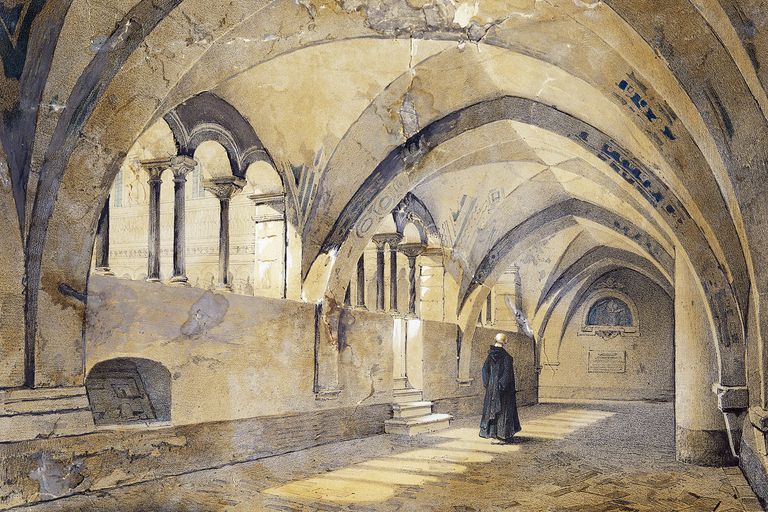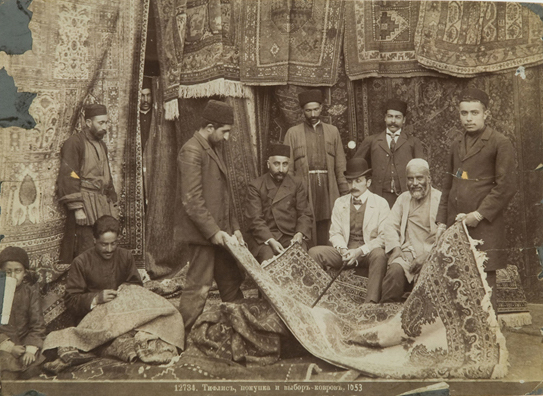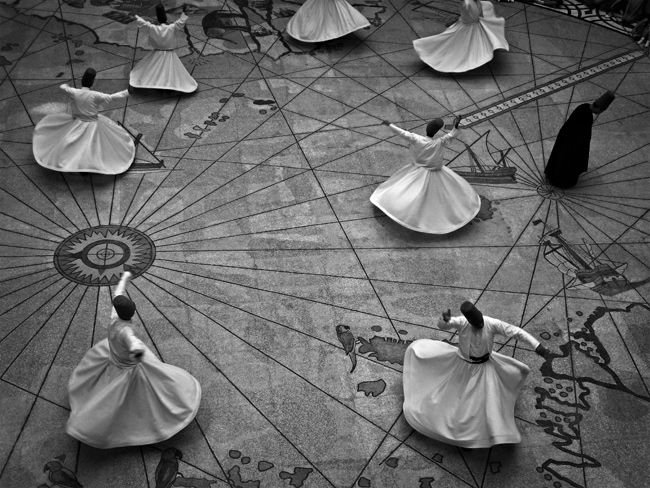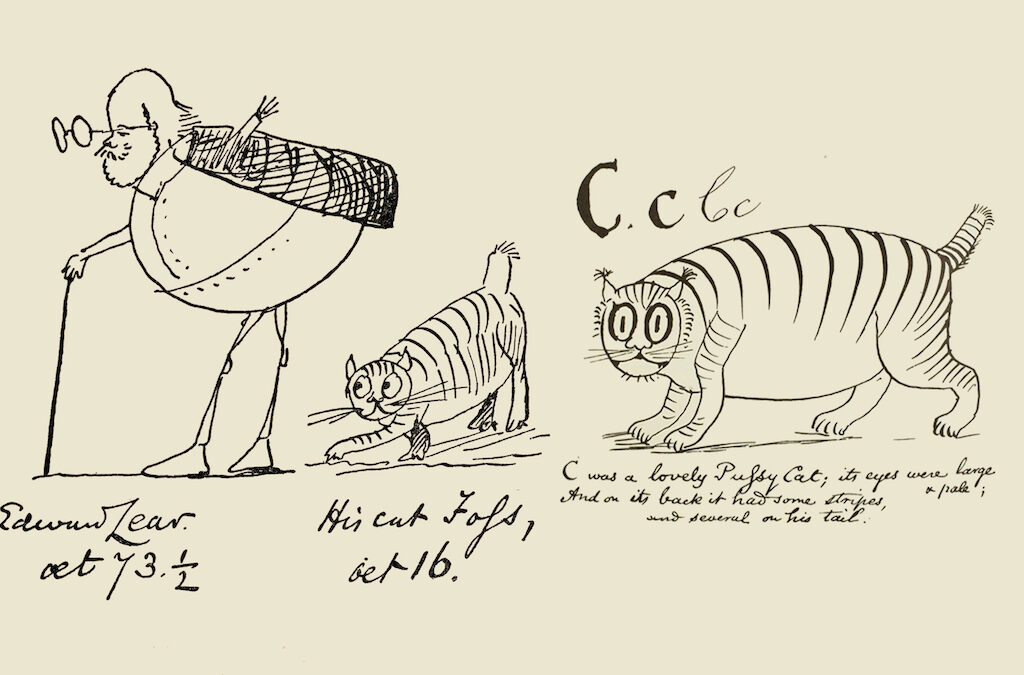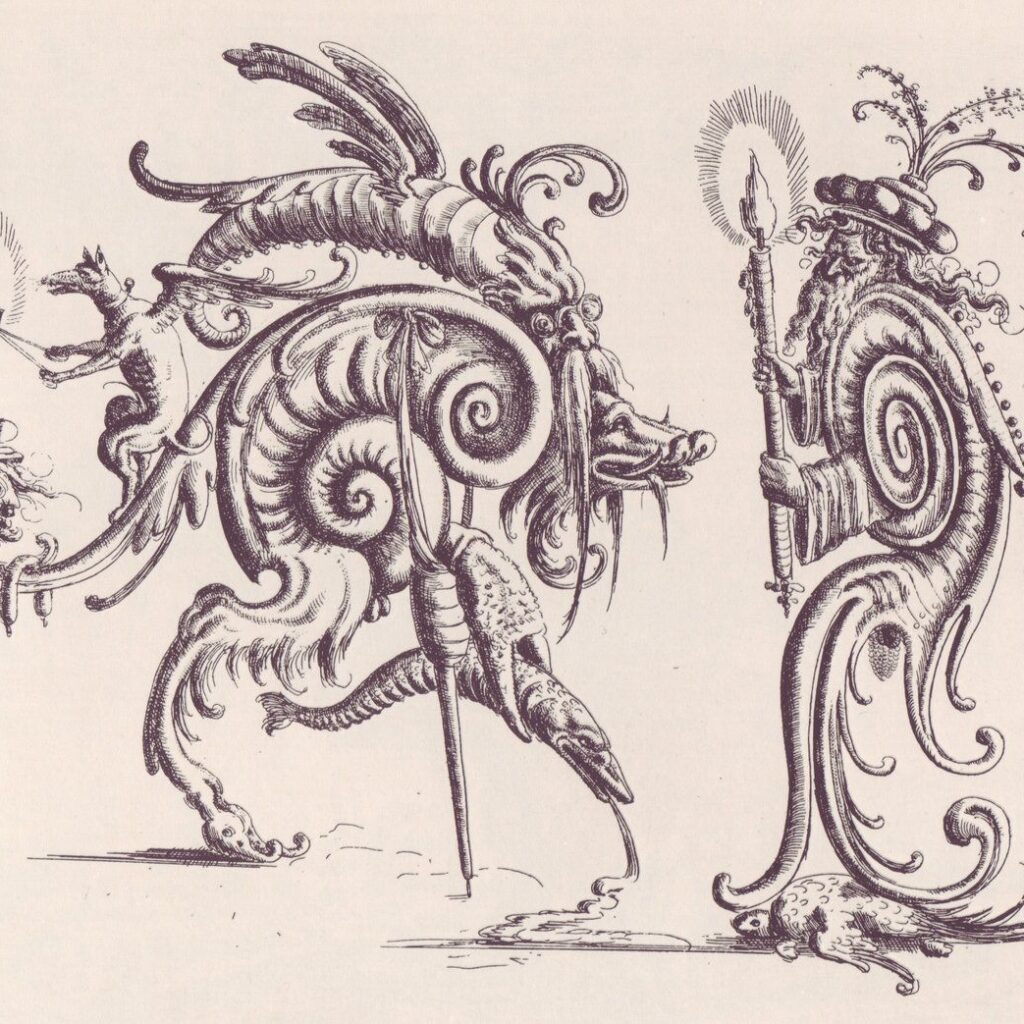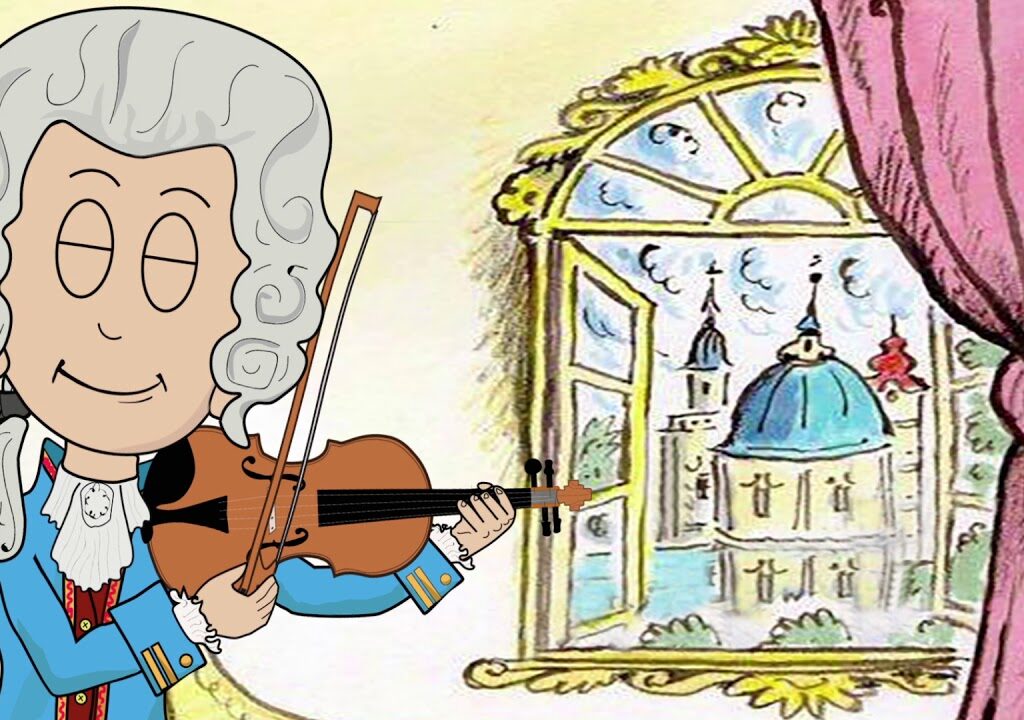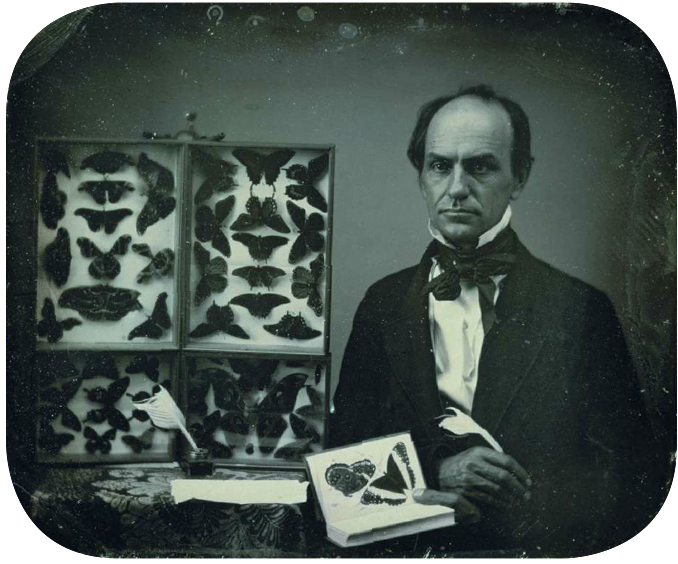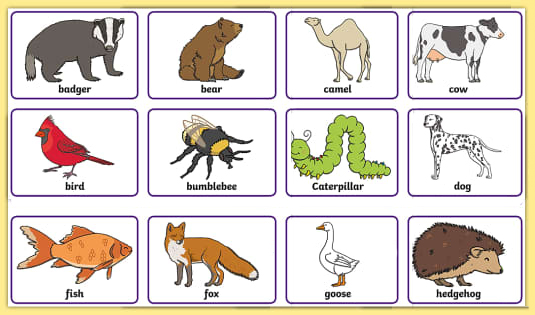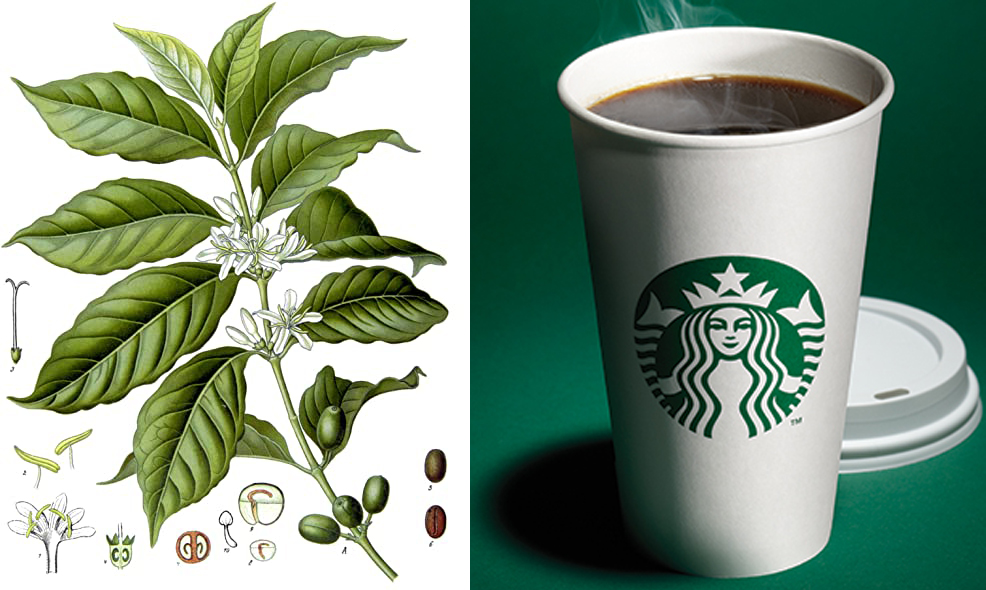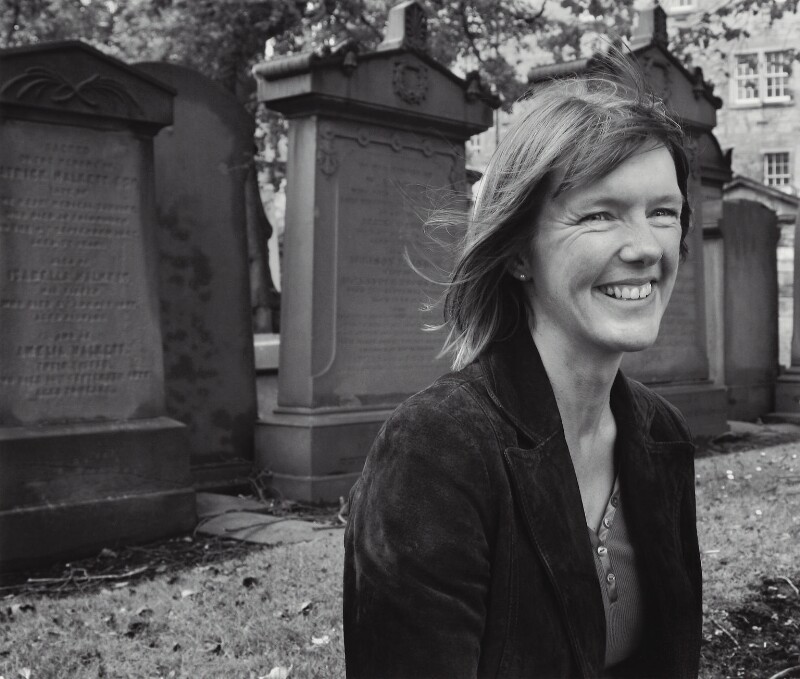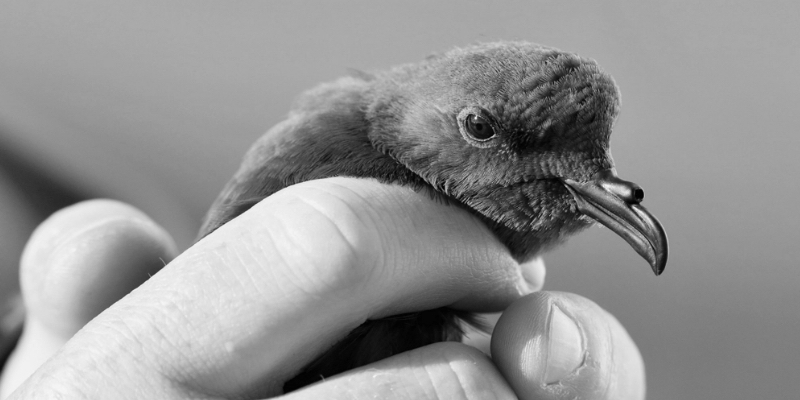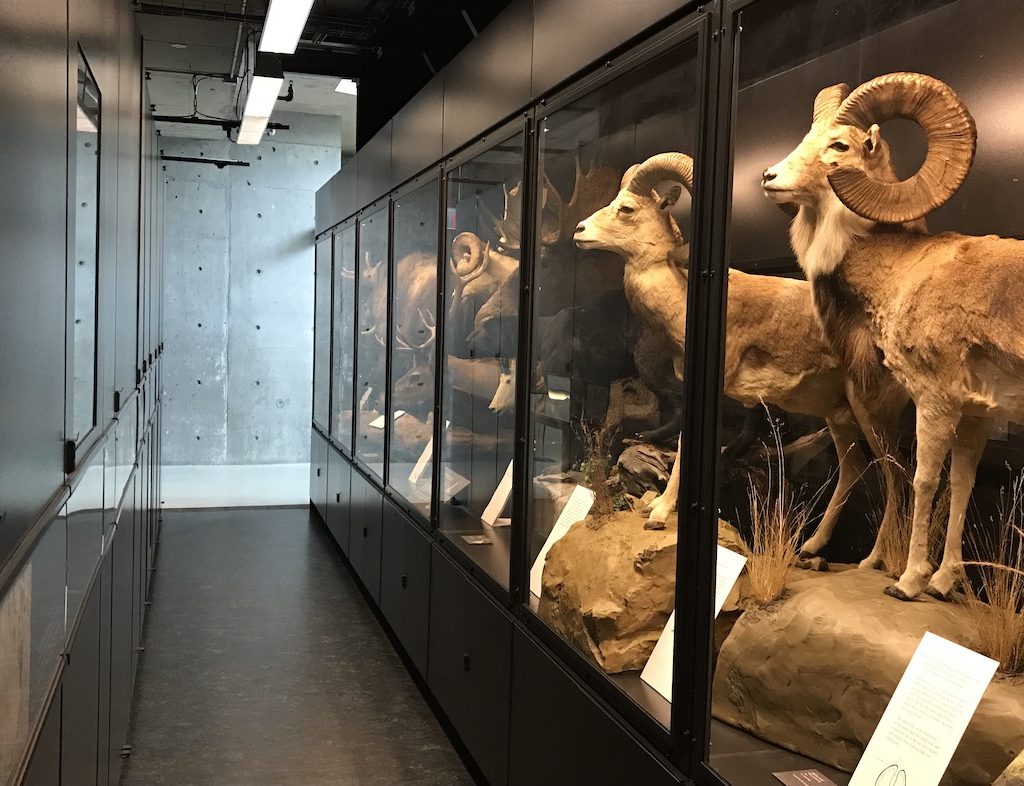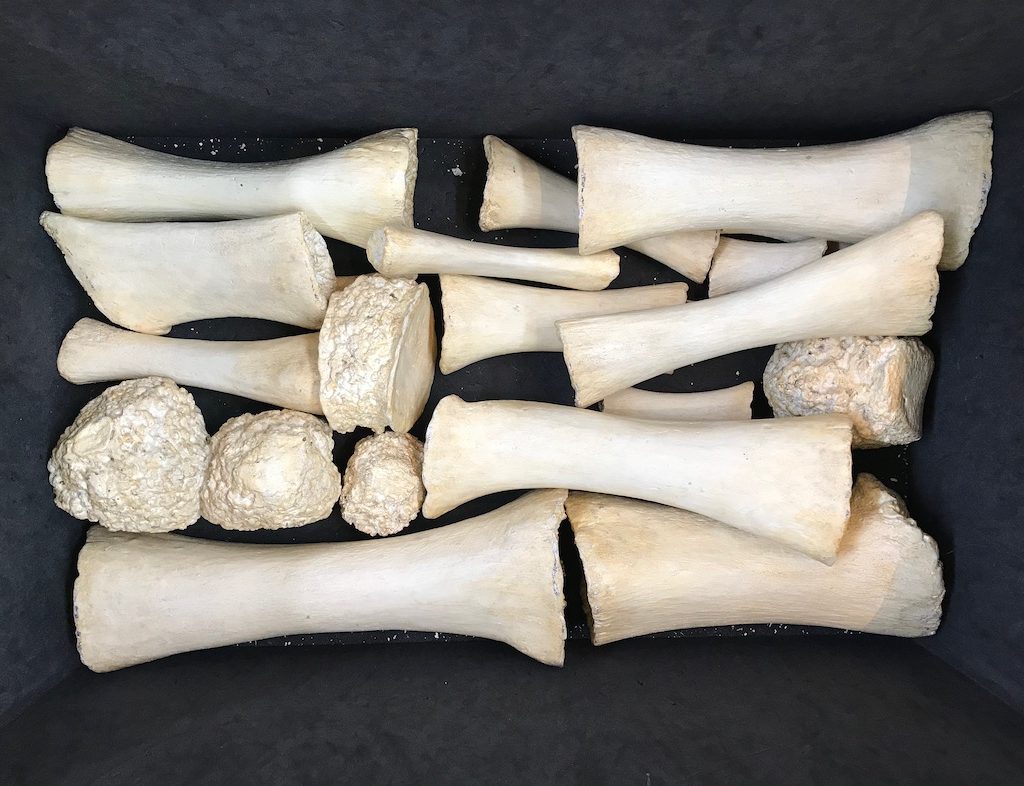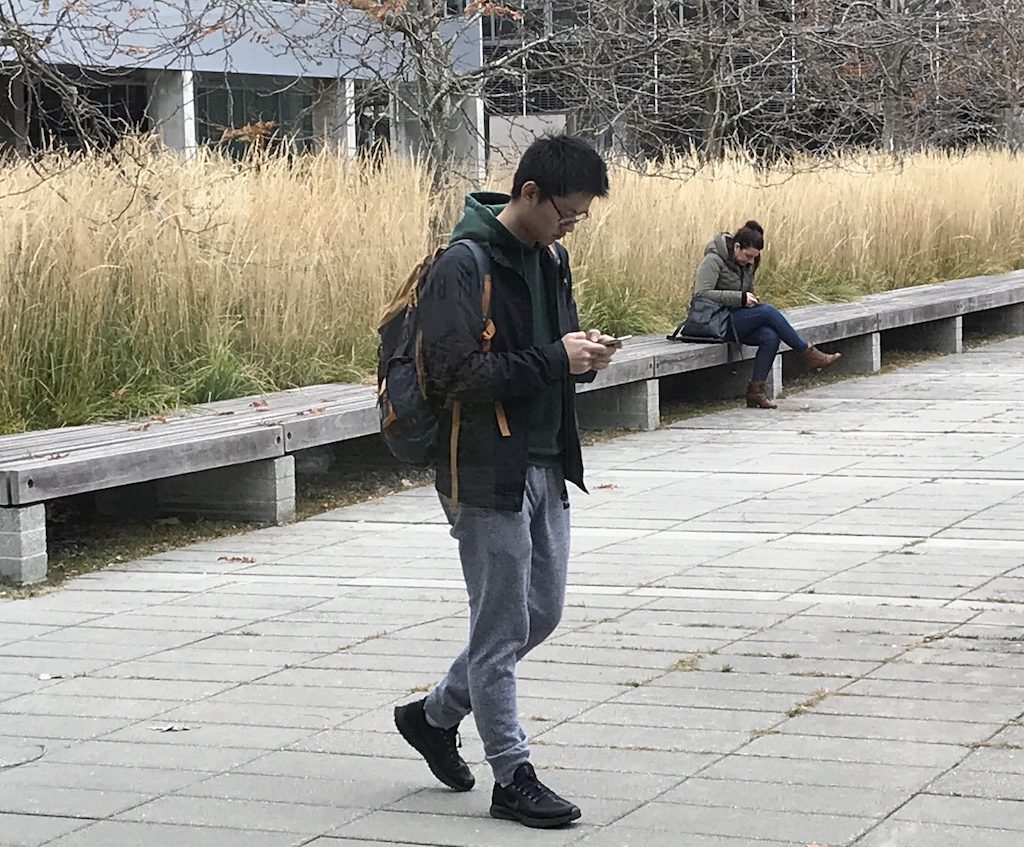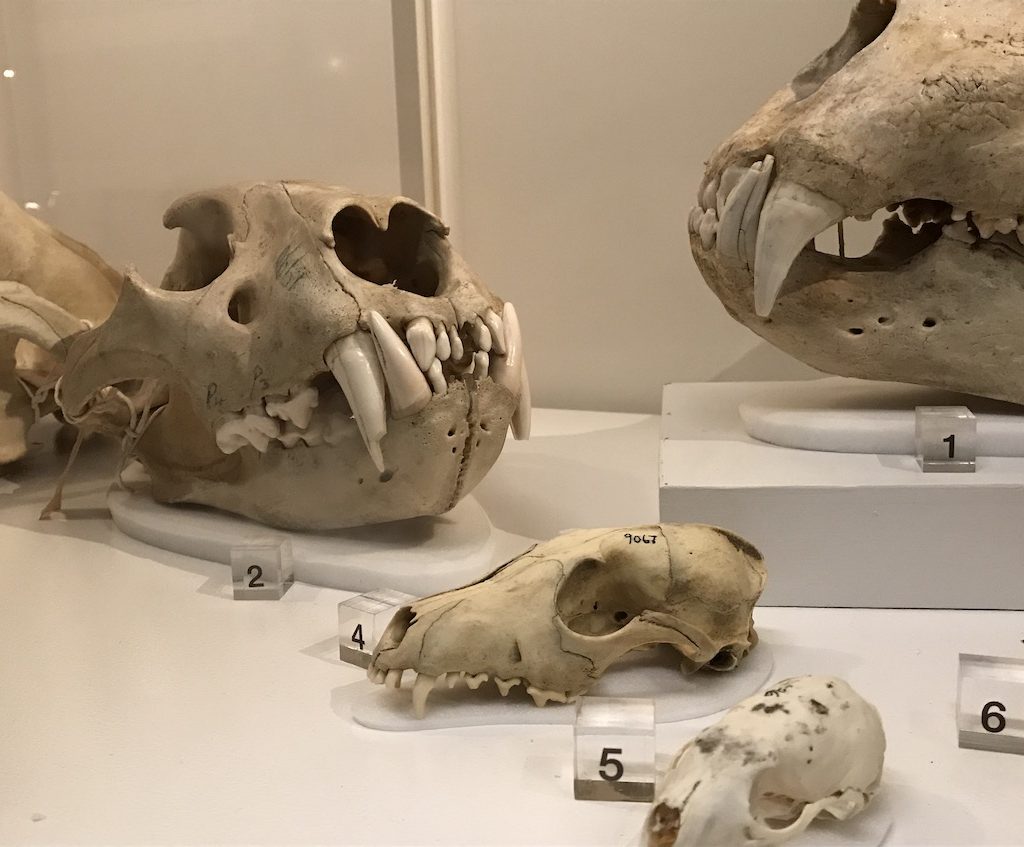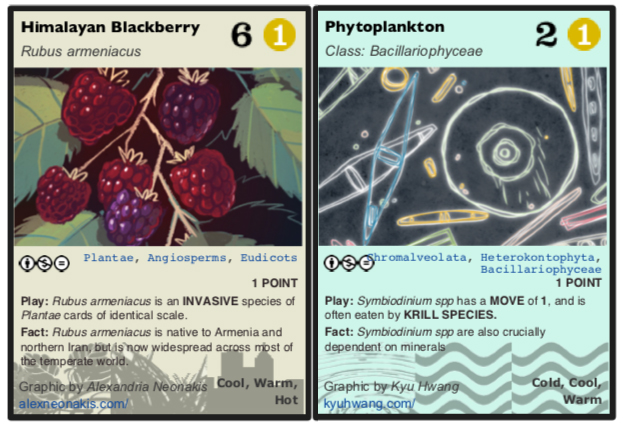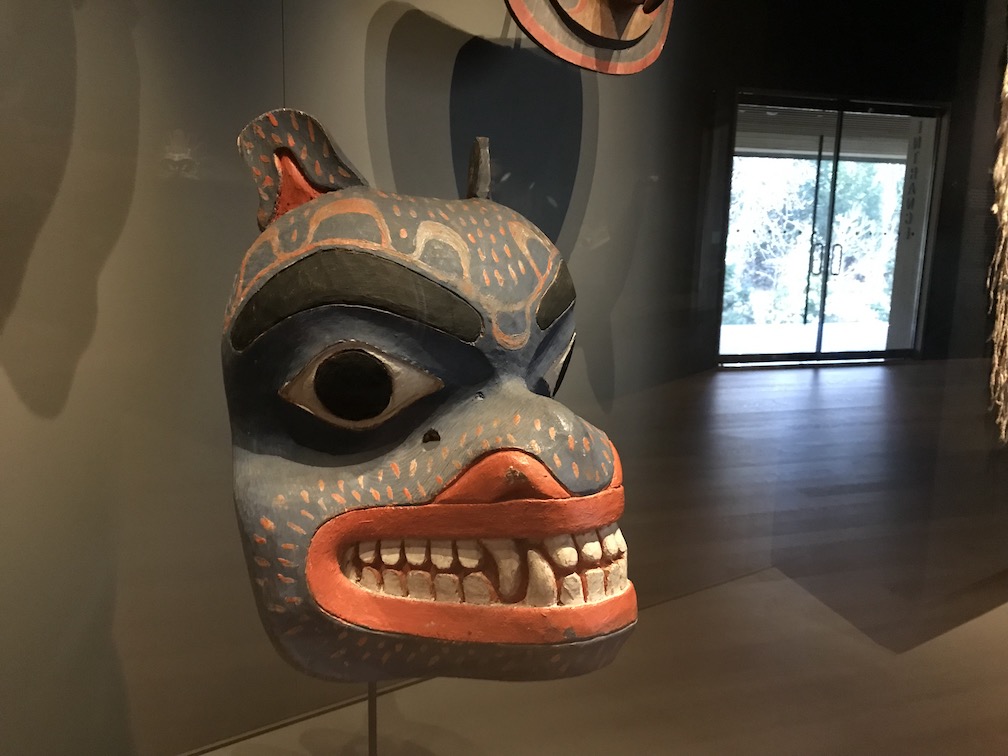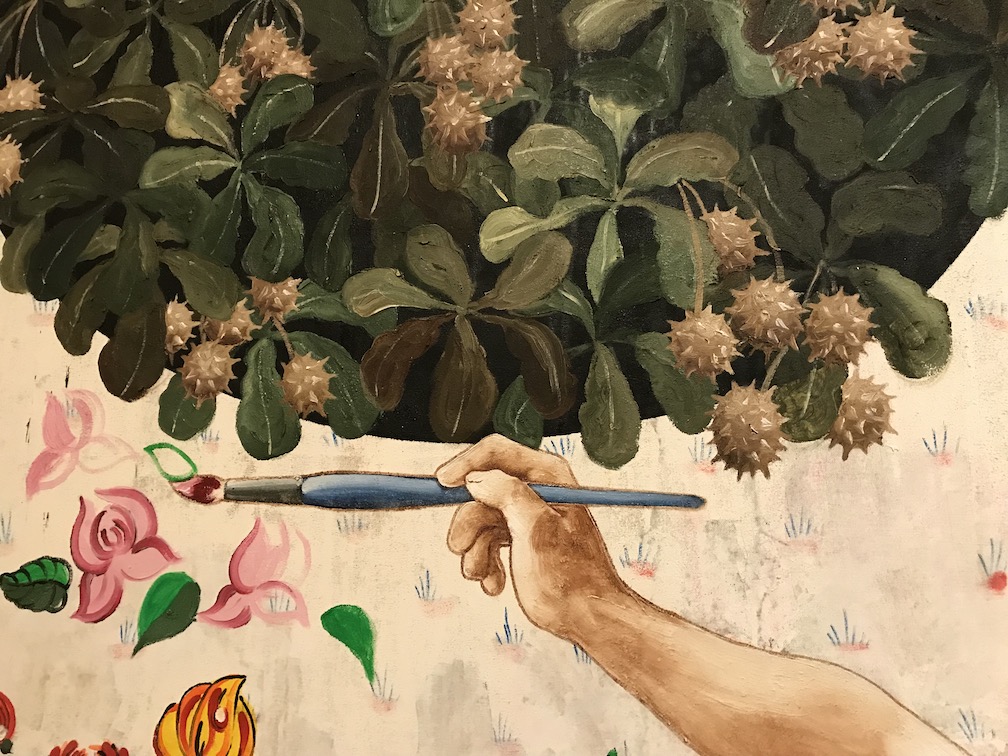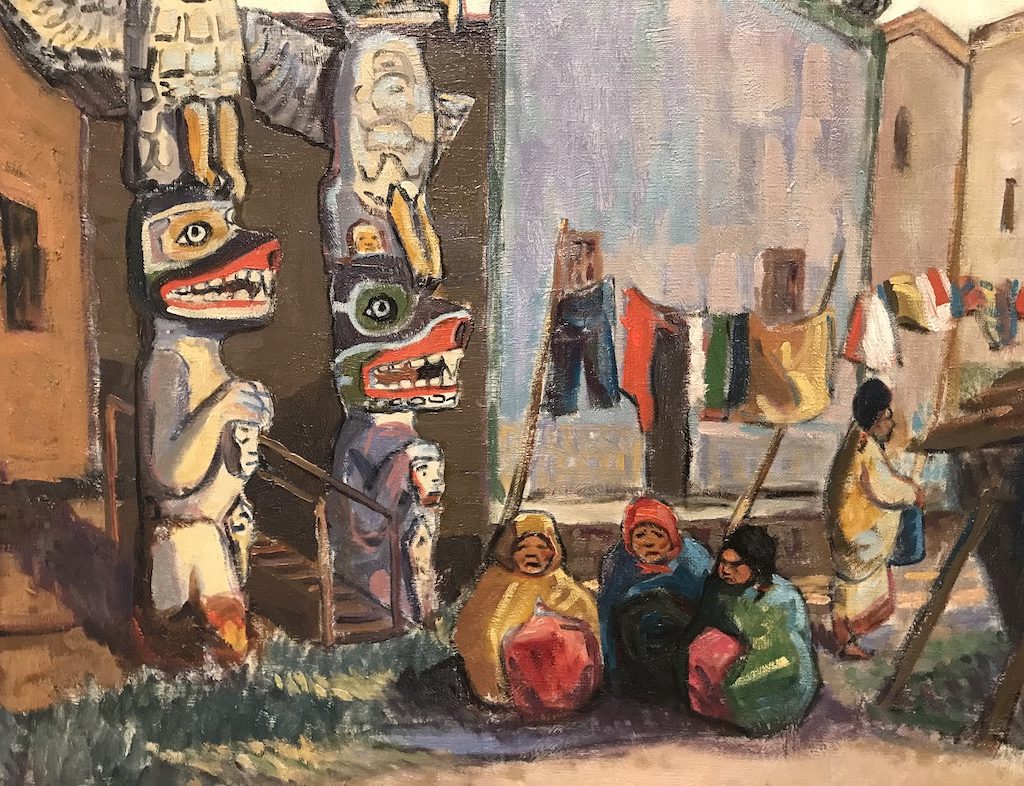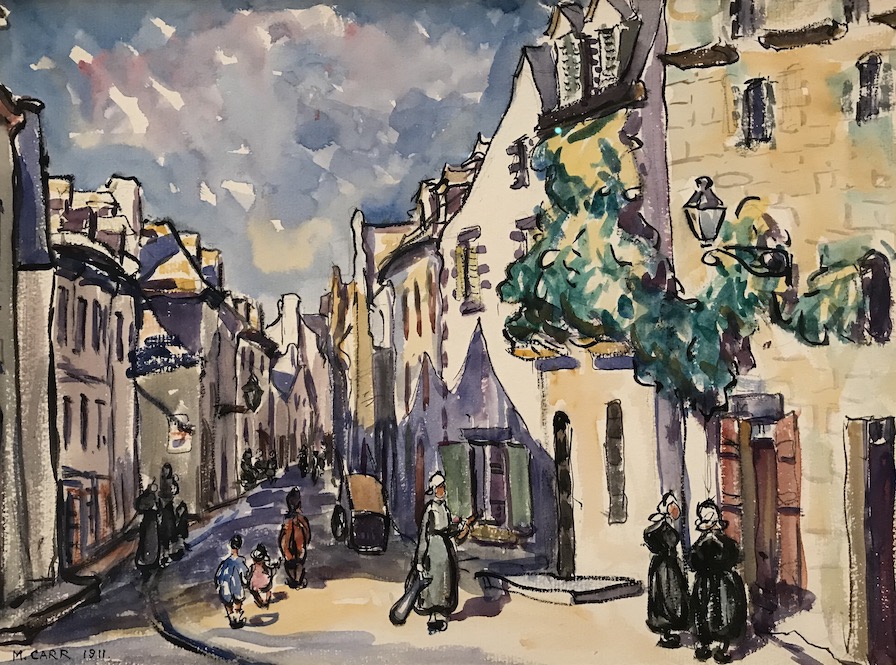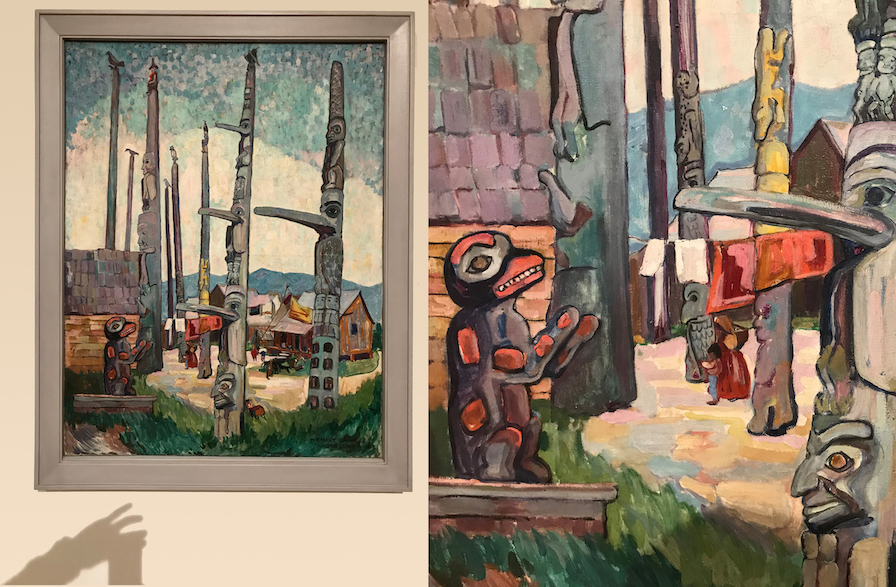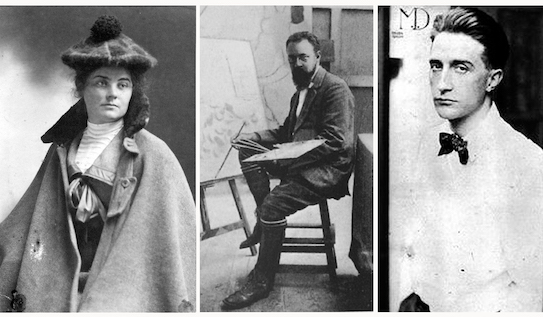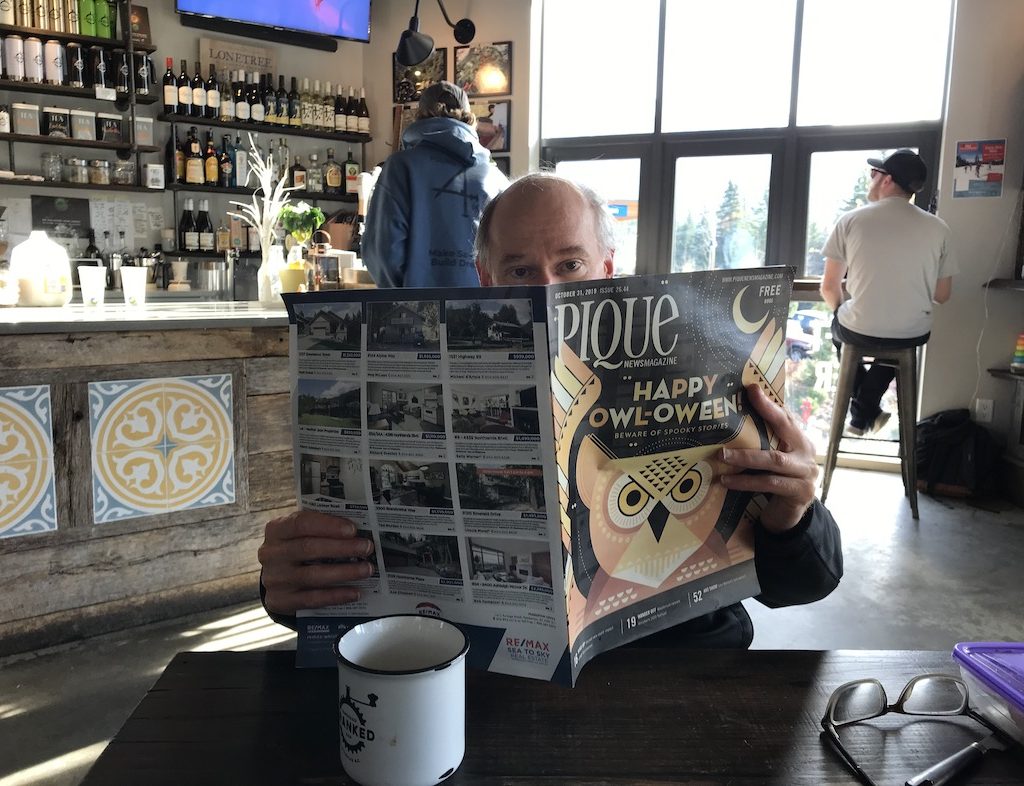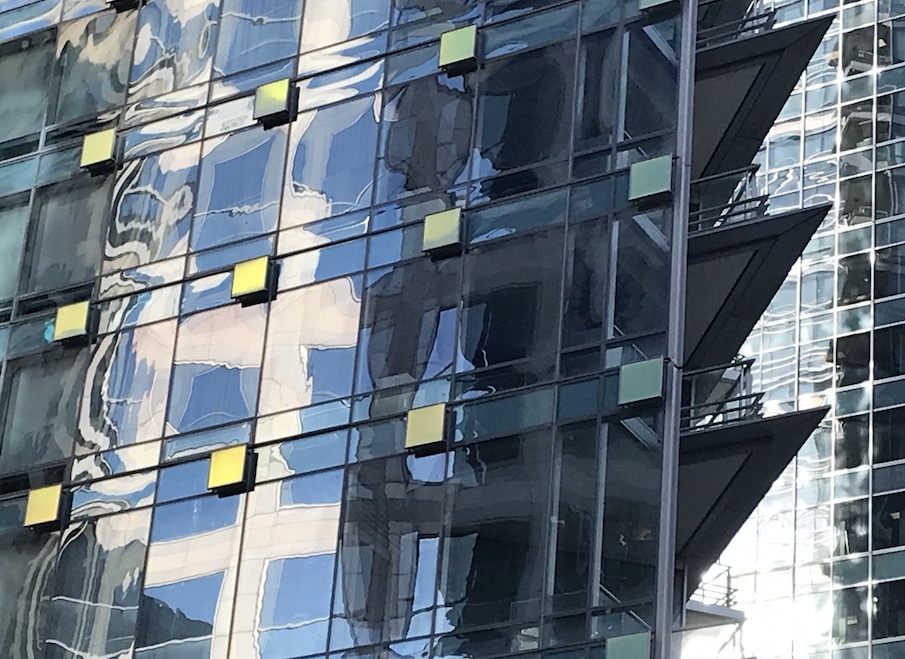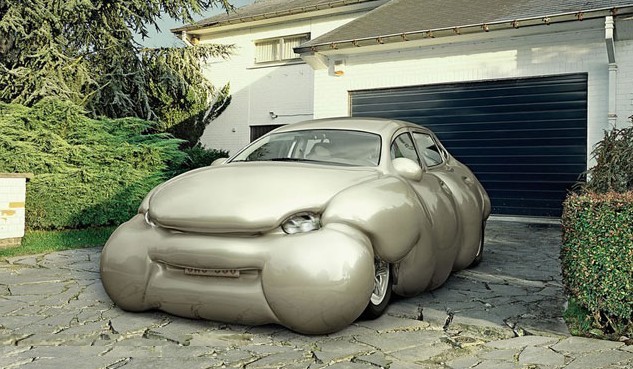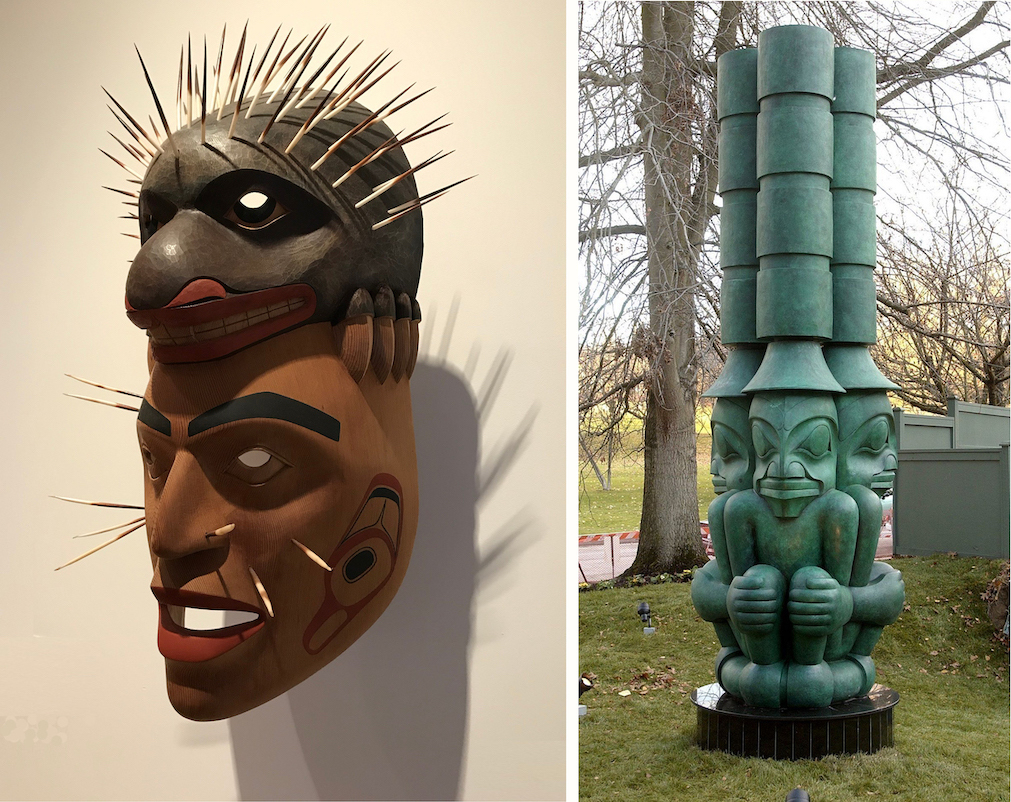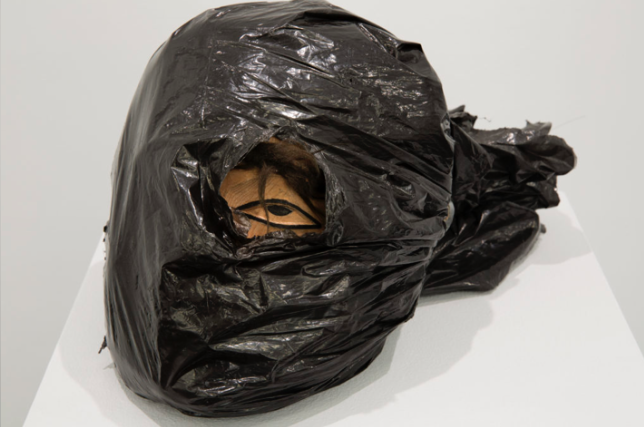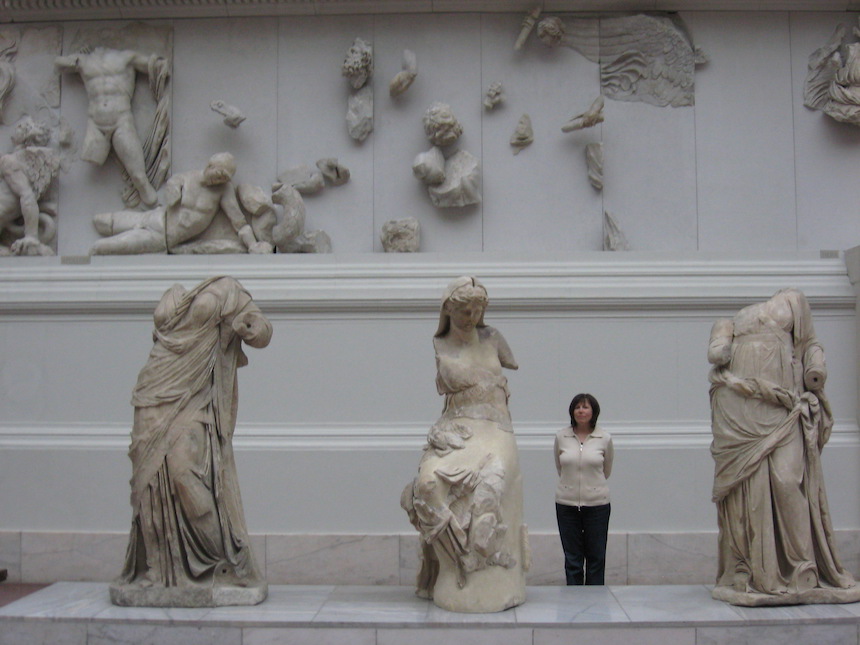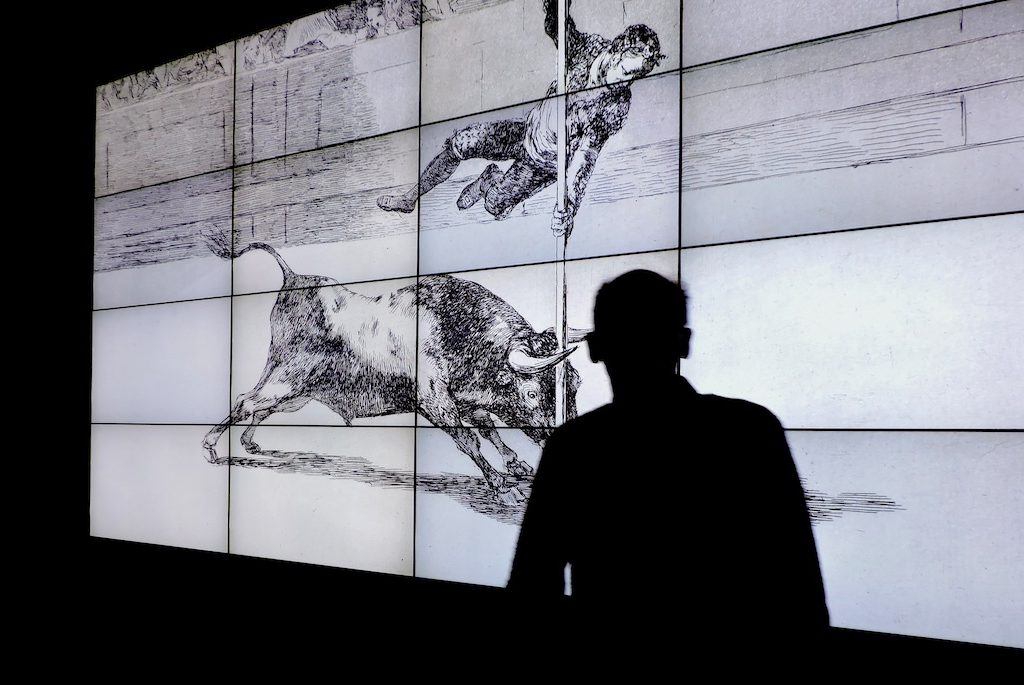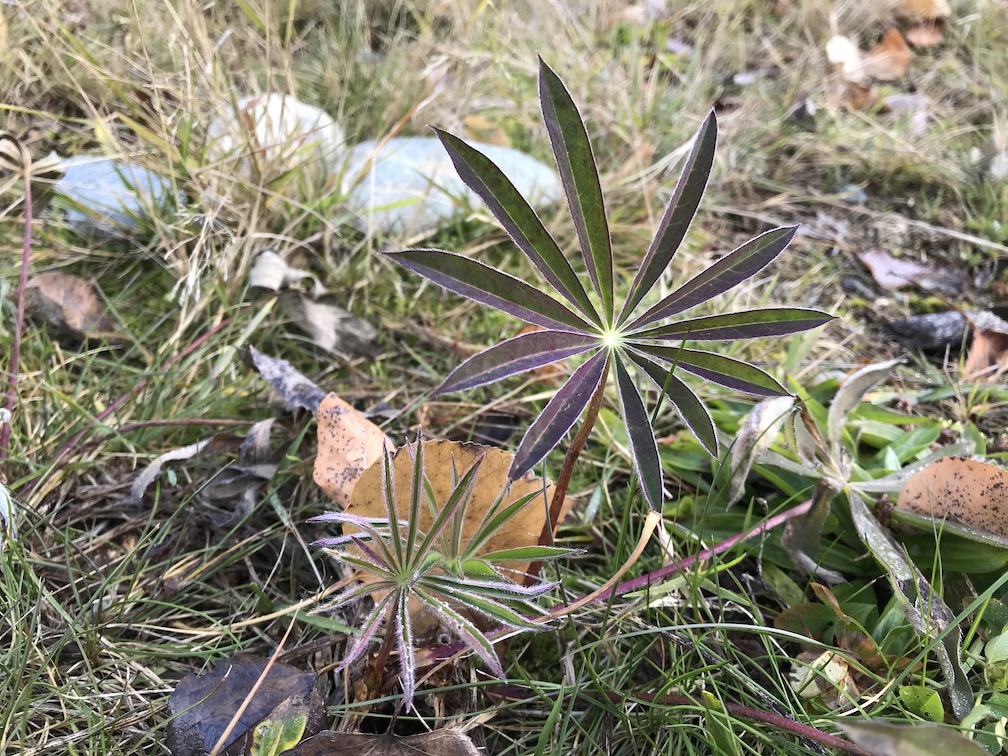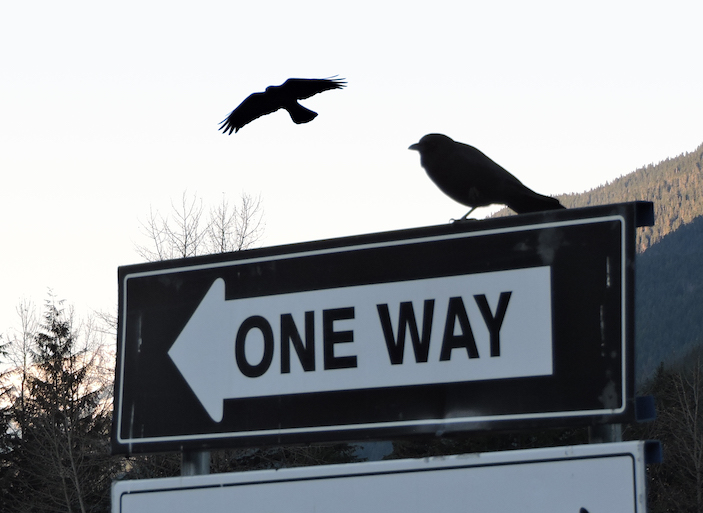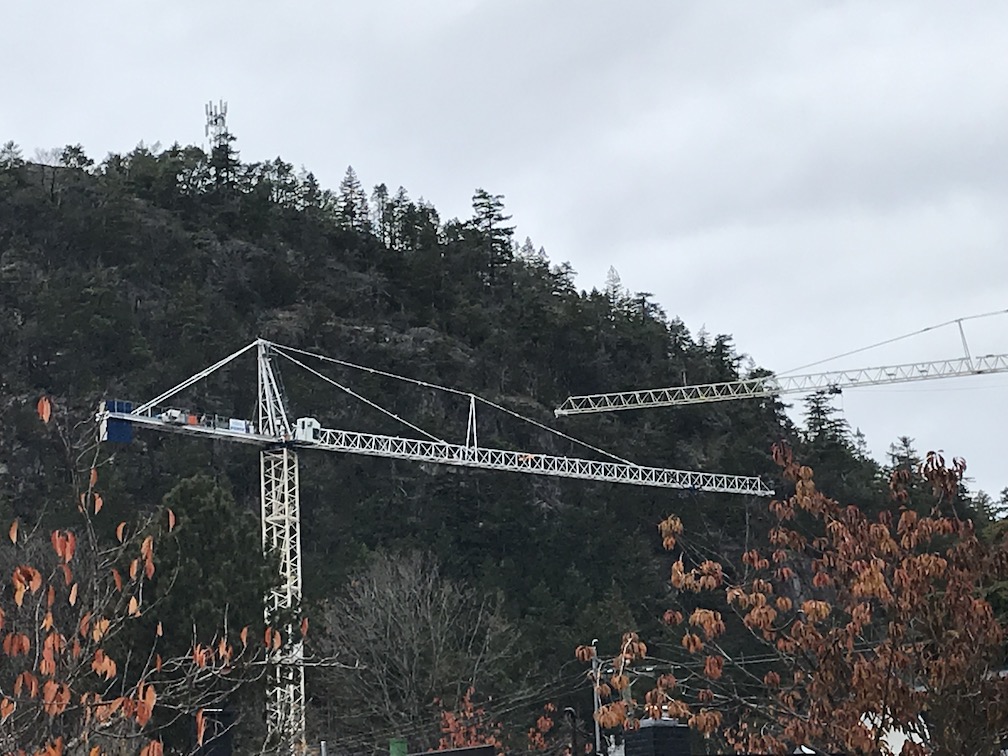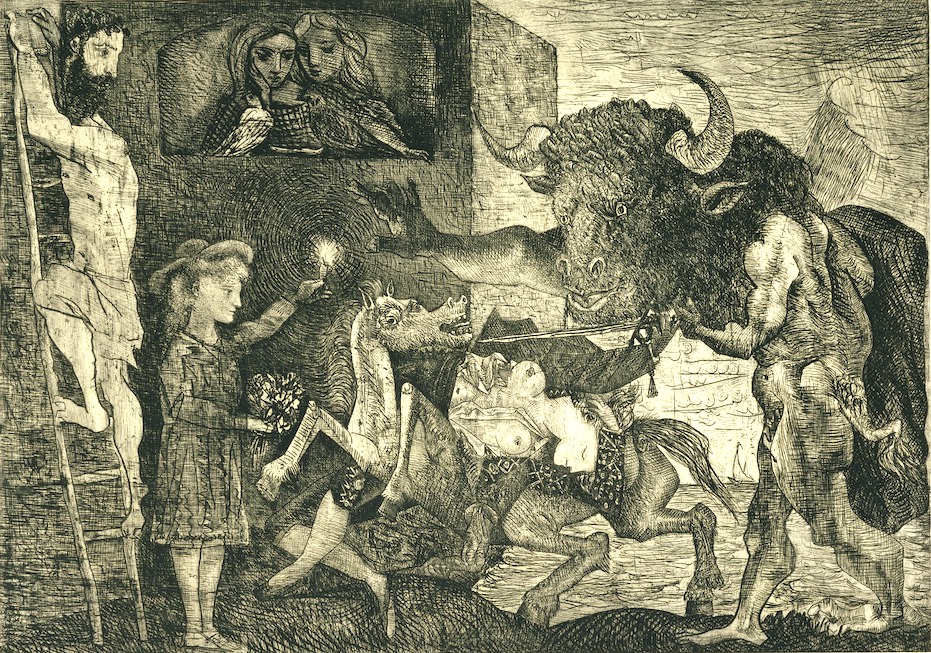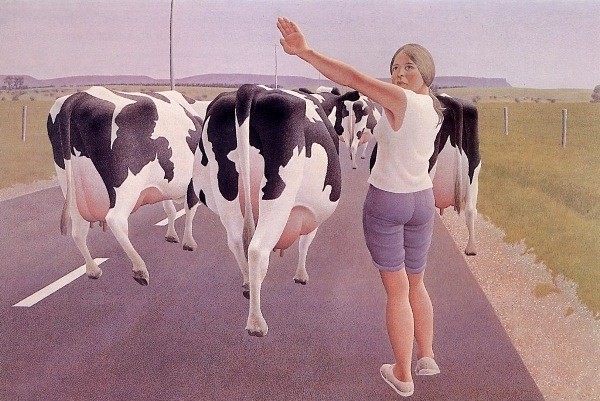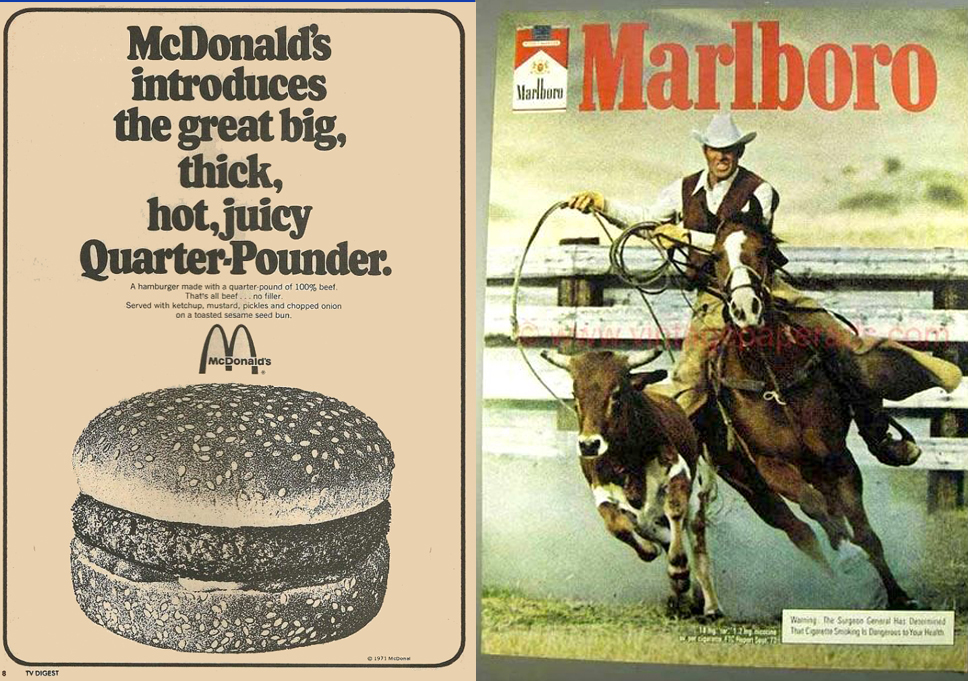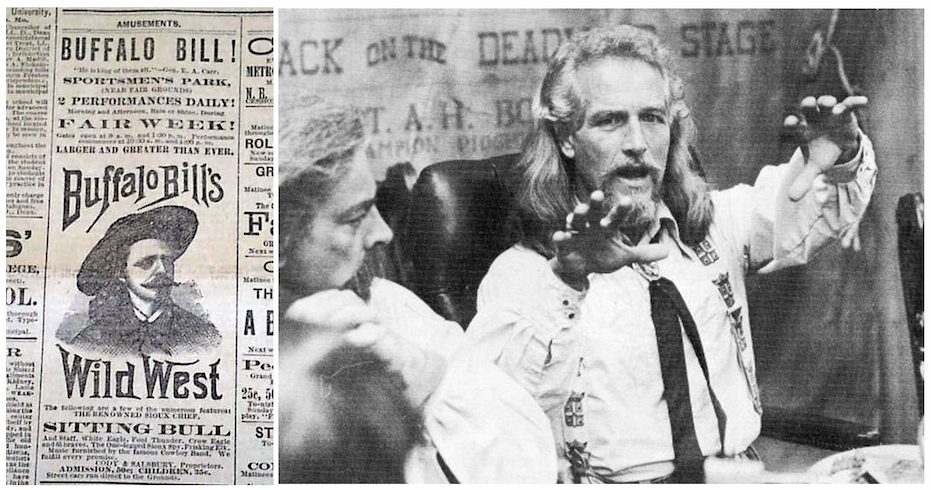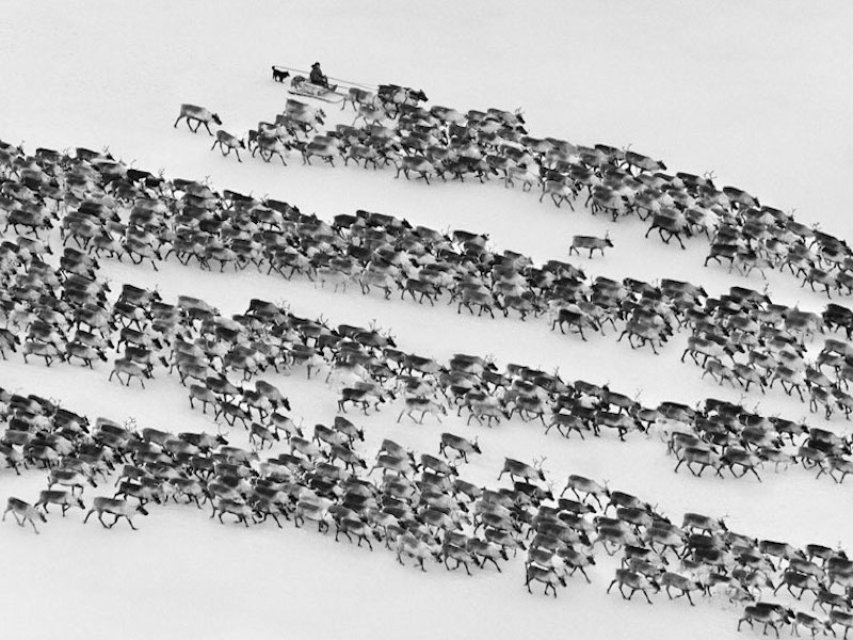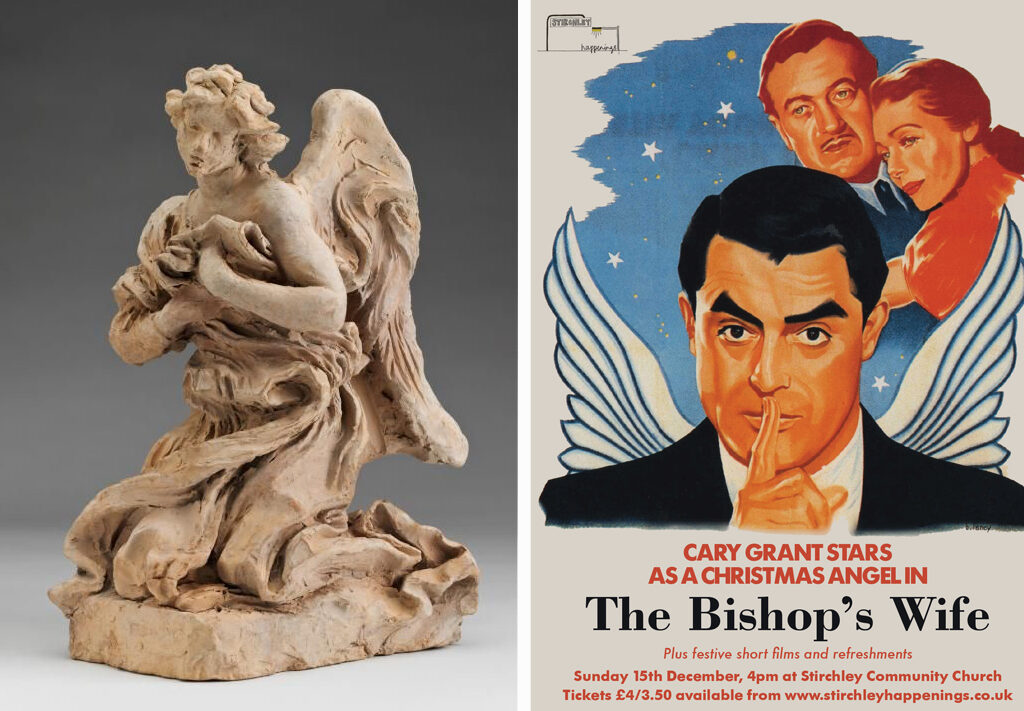
Where can you find an angel? With this question, the curators of the National Gallery in London, invited viewers to join an unusual treasure hunt, The Angel Trail. Until you really begin to look, it’s surprising just how often angels appear in Renaissance and Baroque artworks. As if these great religious dramas, depicted with such care and ingenuity, required angels to add a final touch of otherworldly fairy dust, beside serving their more immediate roles as witnesses, messengers, soldiers, and musicians. Most angels are depicted as beautiful, youthful figures with long shapeless gowns and bright multi-coloured wings, as in the painting below by Fra Angelico. Here the supernatural messenger, Gabriel informs Mary she is pregnant and will soon give birth to Jesus. Both angel and woman are illuminated with halos, as well as being framed in arches of the arcade, while their forward-leaning bodies and crossed arms mirror one another.
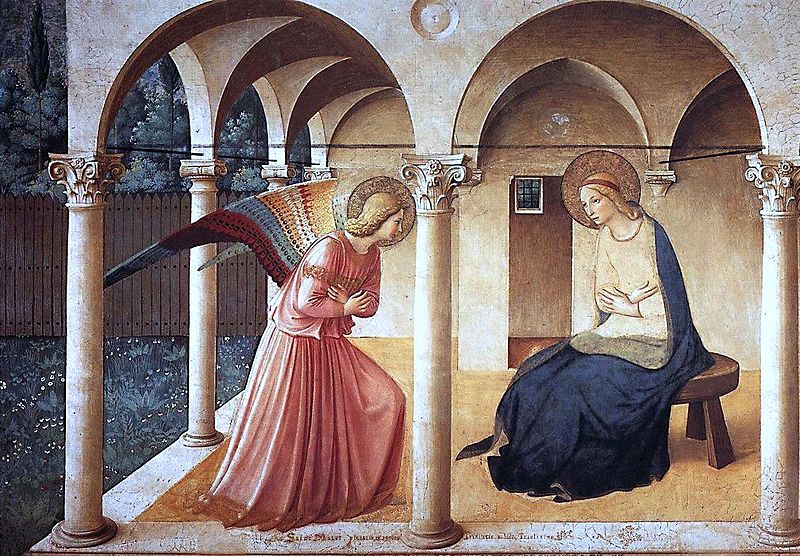
Angels can be solitary or can appear in great crowds or hosts, as in the painting by Francesco Botticini, which shows the nine ranks of angels welcoming the Virgin Mary on her ascent into the dome of heaven.

Could we extend the Angel Trail, the treasure hunt for angels, out of the art gallery and into our own communities? Where then we might we encounter angels or representations of angels? At a recent Talking about Art session, I asked this question, and the first suggestion was in a cemetery. Others suggested in stained glass windows, in the decorations in or on a church. The word decoration made someone think of a Christmas tree or a window display in a store. Many suggestions came all at once: TV shows, fashion shows (Victoria Secret), greeting cards.
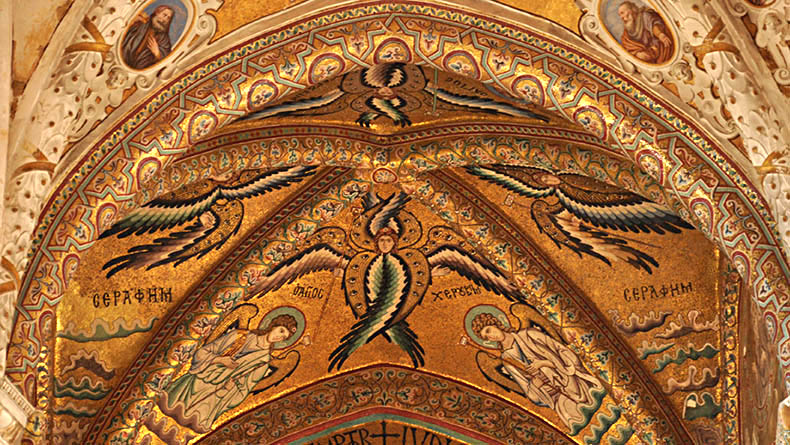
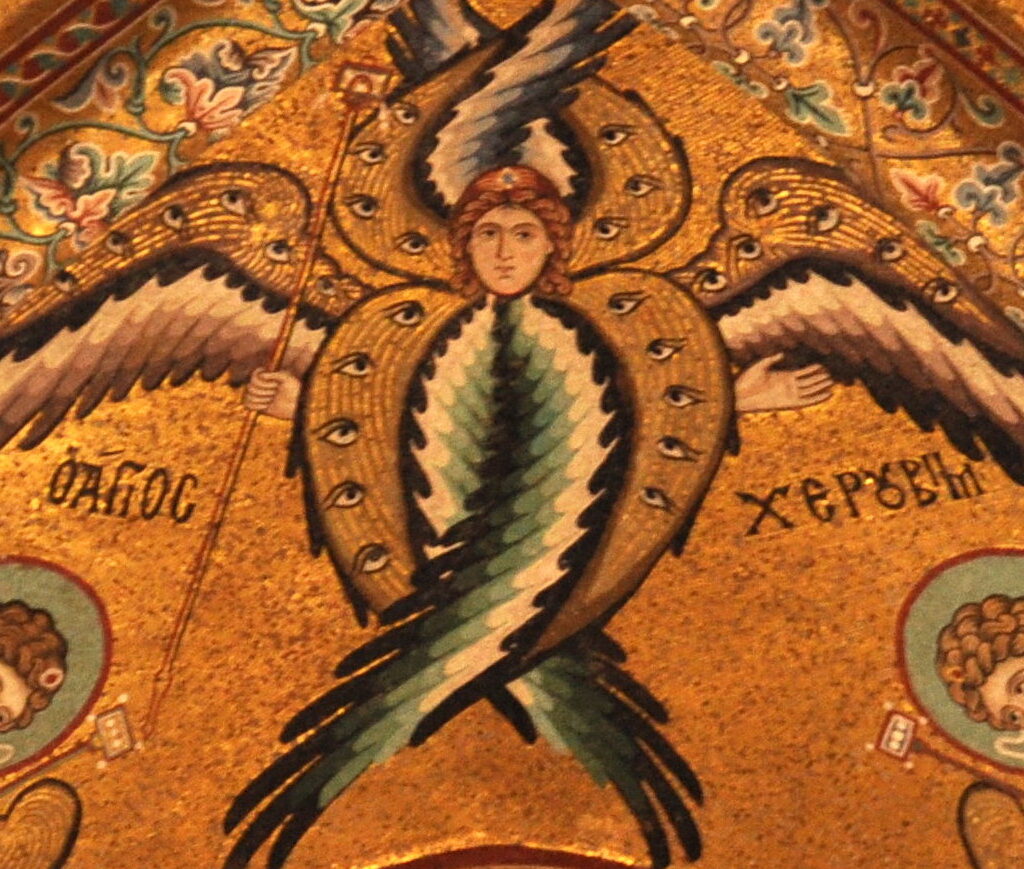
What is the world’s largest angel statue and also its smallest? Antony Gormley is a sculptor famous for creating life-size body casts of himself and placing them as silent watchers at unexpected points throughout a city, often perched on high buildings, looking down in angelic fashion. It’s fitting that Gormley should have created the world’s largest angel, the Angel of the North in Gateshead, northern England. The red steel angel measures 20 metres tall, and 55 metres across (half the length of a football field). It looks a bit like a human form with airplane wings, though a friend mentioned the statuette for the Oscars. I prefer the study shown below to the monumental outdoor figure.
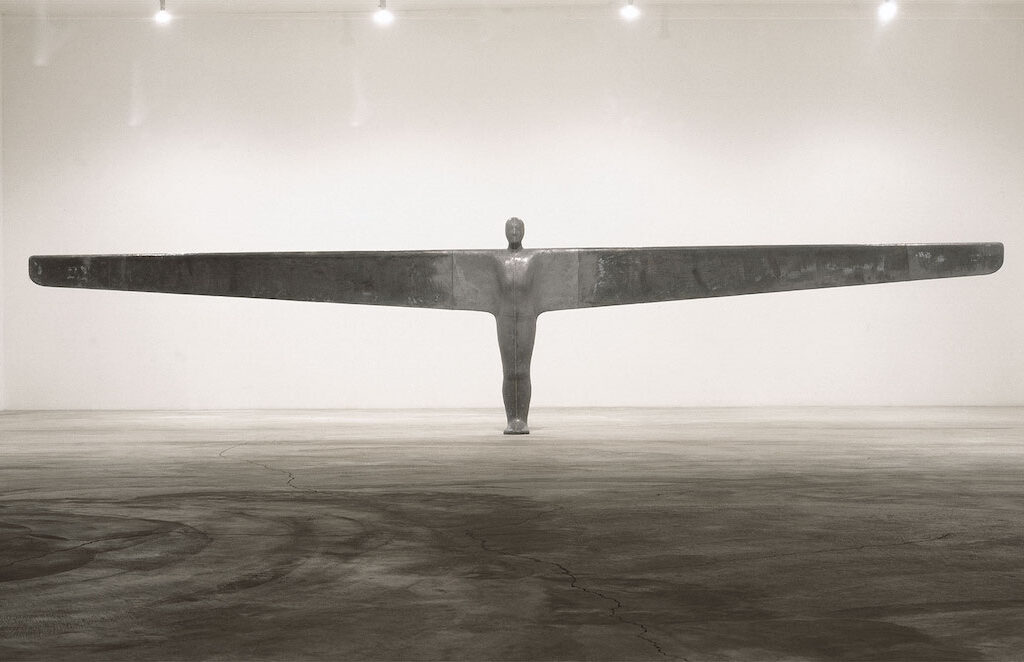
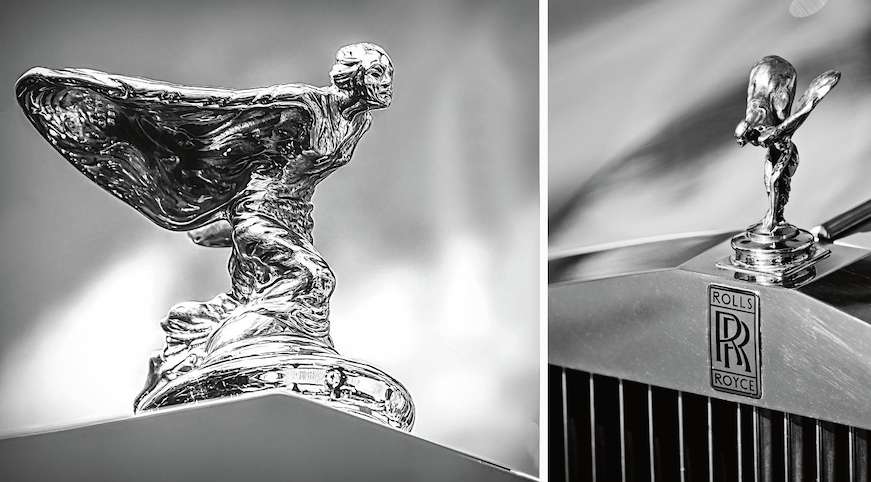
The hood ornament designed for Rolls Royce may not represent an angel exactly, though the outstretched arms and billowing cape strongly resemble wings. What I like about the figure is that it’s not a stationary statue but a figure seen from a moving car. In stories, angels often appear to needy or deserving individuals, but here they appear for the gratification of wealthy sport car enthusiasts, which demonstrates that everyone, even the rich and pampered, can use an angel. Here are a few more samples, showing the versatility and popularity of angels.
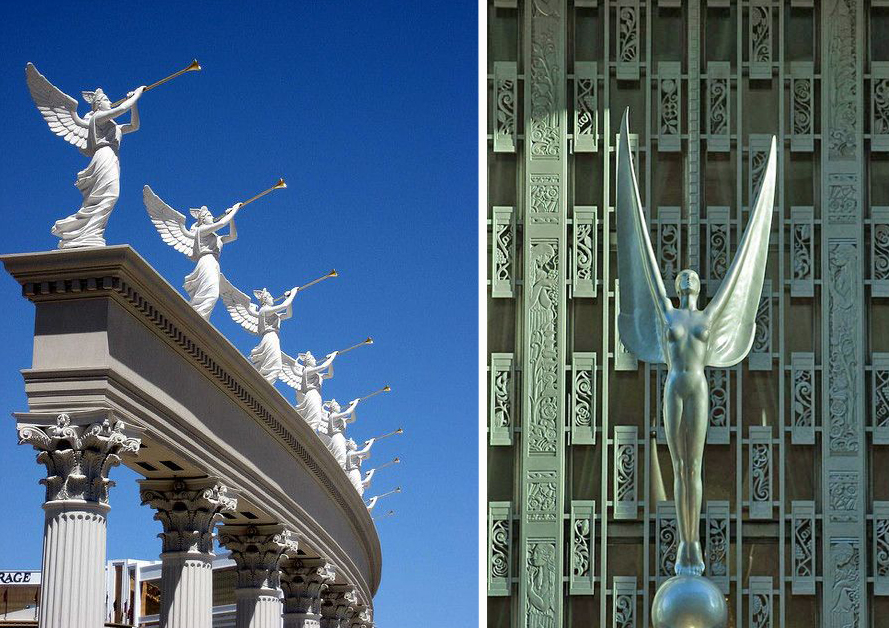
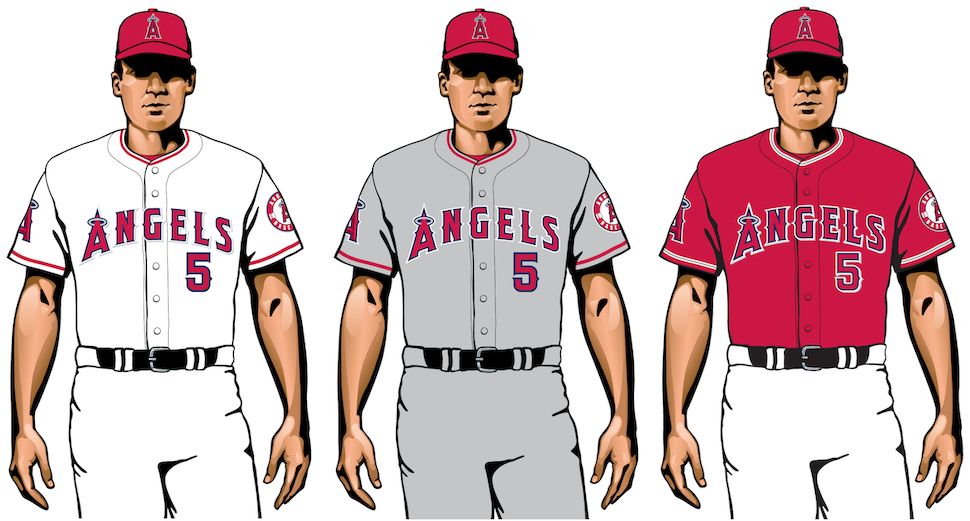
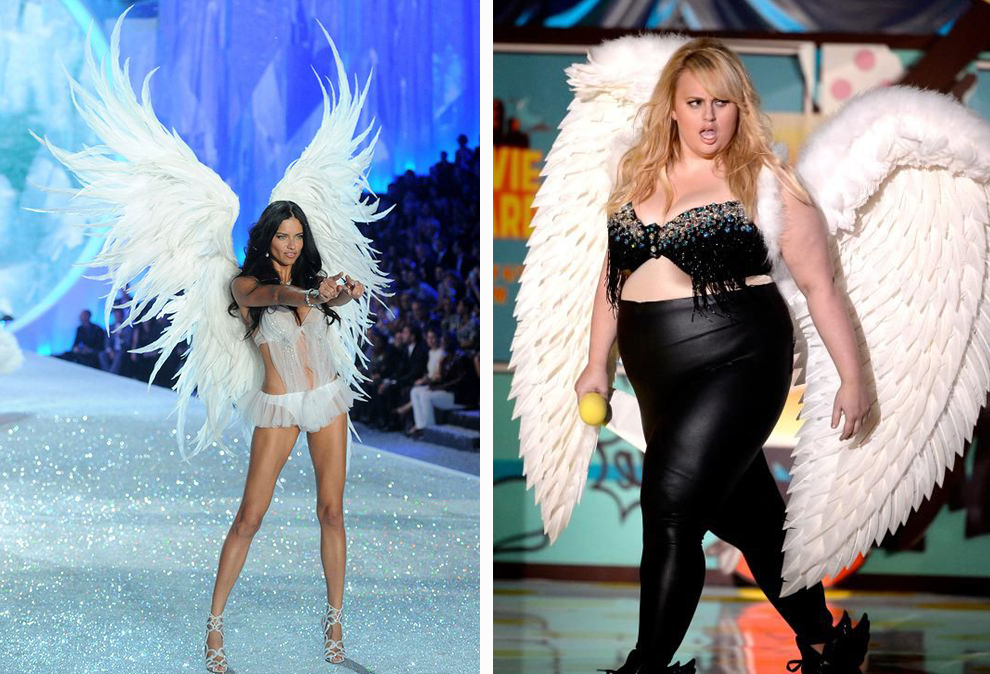
Two major themes of our Art Talks have been: 1) the transition from religious art to secular art as we move from the Renaissance into the present, and 2) the interaction between Fine Art and popular culture. When we take angels out of a church and place them in a Las Vegas hotel (good luck with your gambling) or on a runway (out of this world beauty) or baseball field (angels are rather playful, aren’t they?) this transition from sacred to secular becomes clear.
Where do we find angels in the Bible? Angels often appear in Bible stories that involve turning points in human history. Angels also appear before notable characters whose lives are about to dramatically change. Here are a few samples that readily come to mind:
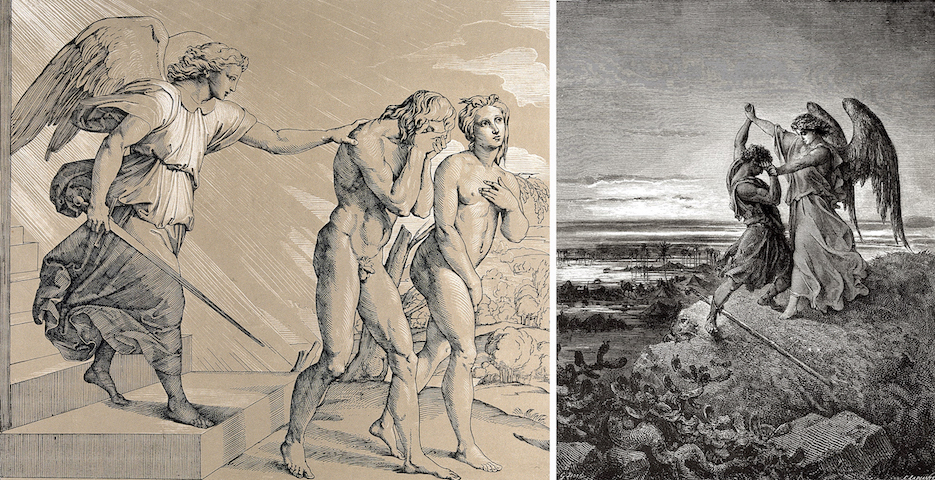
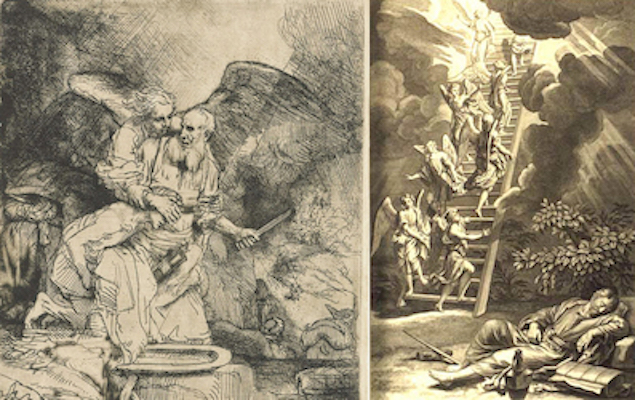
These are all from the Old Testament. In the New Testament, the most familiar angel story may be the appearance of the angel Gabriel to Mary announcing the birth of Jesus.
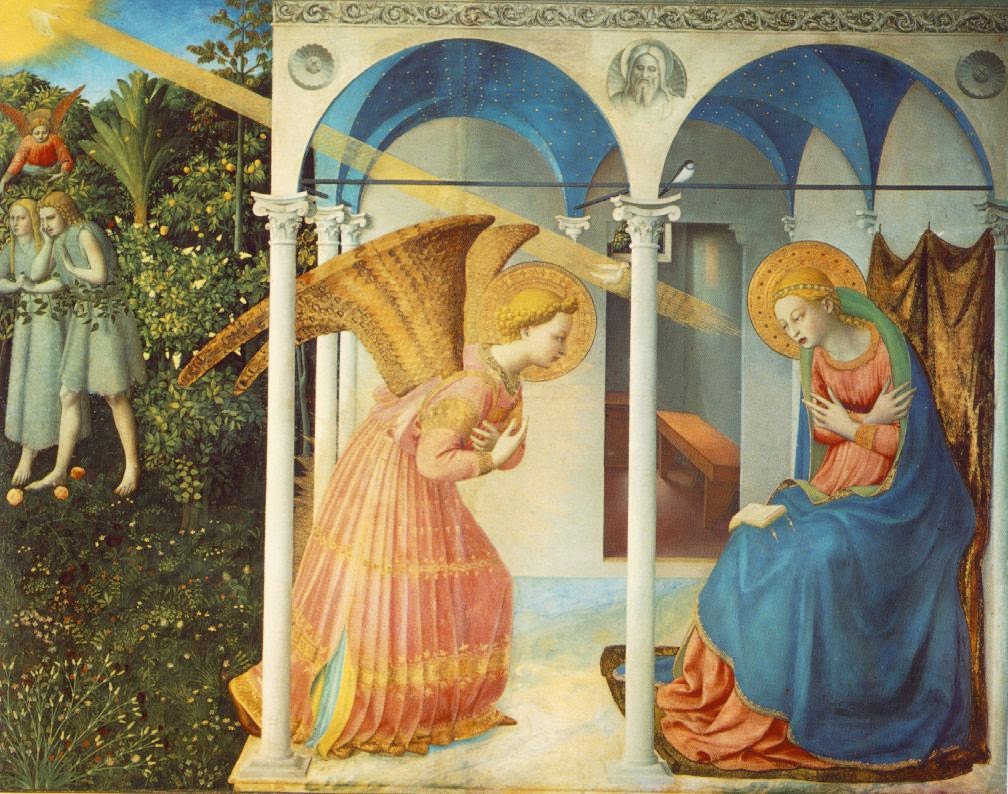
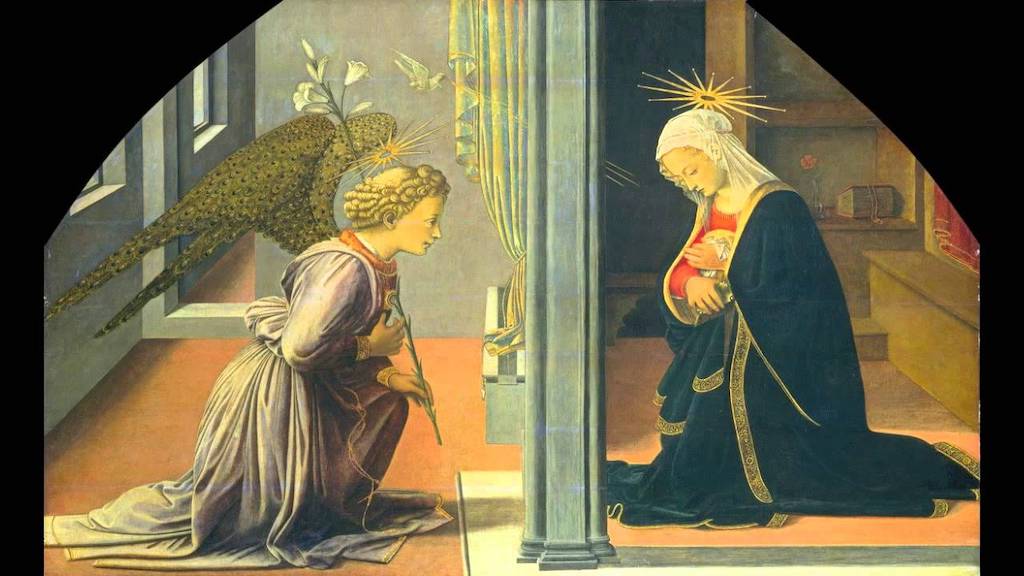
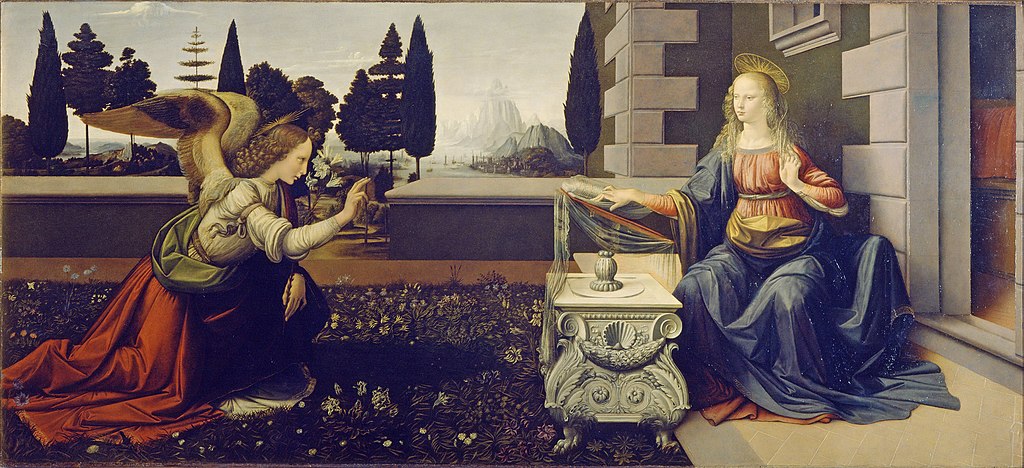
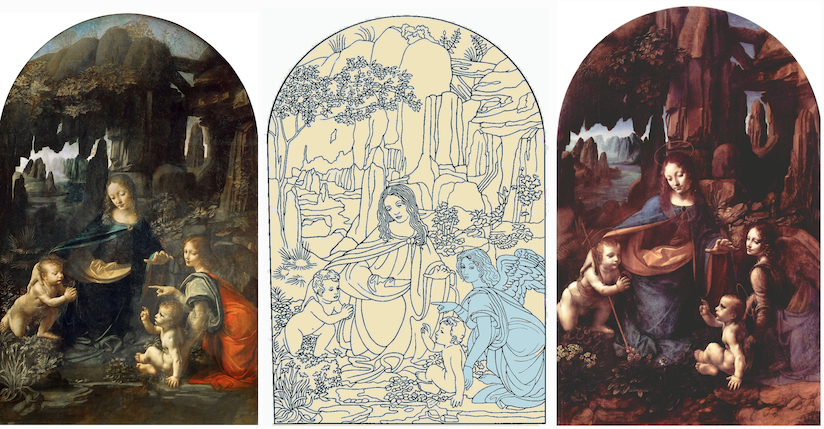
Leonardo’s angel in a cave is not a story that appears in the Bible. It’s an apocryphal tale of the rescue of the infants Jesus and John the Baptist from the massacre of the innocents. The angel has brought this holy group to a secure hideout in the mountains. The setting adds mystery to the scene and reflects Leonardo’s love for the mountainous landscapes of northern Italy, where he grew up. Among Leonardo’s many writings, there are few references to his personal life. This is one of them: “Having wandered some distance among overhanging rocks, I came to the entrance of a great cavern… Two emotions arose in me: fear and desire. Fear of the threatening dark cavern and desire to see if there were any marvellous things in it.” In other writings, Leonardo contrasts time and nature. Nature builds forms up, time wears them away. “Oh, Time, swift despoiler of created things, how many kings, how many peoples have you undone in this winding and cavernous recess?” Leonardo’s painting is set in a dangerous and disintegrating physical world, with caves fearful to enter, yet inside we are find a scene of spiritual renewal that is marvellous and enchanting.
Among Leonardo’s group of figures, the angel points and Mary responds with a protective gesture–the same gestures Raphael used for his central philosophers in The School of Athens. The opening in Mary’s cloak, near her heart, echoes the opening at the mouth of the cave. The group are perched precariously on the edge of a rocky ledge. The angel’s left hand steadies Jesus from harm. This may be the first instance of the guardian angel theme in Western art. The theme gains a renewal of popularity in the 19th century in scenes that have nothing to do with Bible stories. The popular images below, reflect a vision of childhood innocence, flourishing in nature, worthy of divine protection, and suggest the influence of thinkers such as Jean-Jacques Rousseau, and the poets William Blake and William Wordsworth.

In the 20th century, the guardian angel lives on, but in a new form. In the images below, Superman saves children from the dangers of modern life. Is the comic book superhero our modern day guardian angel? I see at least three similarities: 1) both angels and superheroes can fly, 2) they both have capes or long robes, 3) their identities are mysterious to the general public.

However, the medium that best depicts angels in the 20th century is not comics, paintings or sculptures, but cinema. A few examples: It’s a Wonderful Life, The Bishop’s Wife, Michael, Wings of Desire. In each case, the angel is idiosyncratic and somewhat flawed. Clarence Oddbody in It’s a Wonderful Life is middle-aged, simple-minded and has no wings. Even he admits he’s an ASC, angel second class. Cary Grant in The Bishop’s Wife falls in love with another man’s wife and seems to enjoy tormenting the very person he’s been asked to save, all for the greater good, of course. Michael is played by an overweight John Travolta, who enjoys dancing and food and is easily distracted. In Wings of Desire, the angels are shadowy figures who can only observe humans, but not intercede on their behalf. The angels see what people cannot see, yet they envy humanity for their depth of feeling and experiences of love and loss. Envy may not be the right word. It’s more a desire for life, even if that life takes the flawed and limited courses pursued by ordinary people. In the end, some angels choose to become human, trading perfect equanimity for passionate and messy engagement.
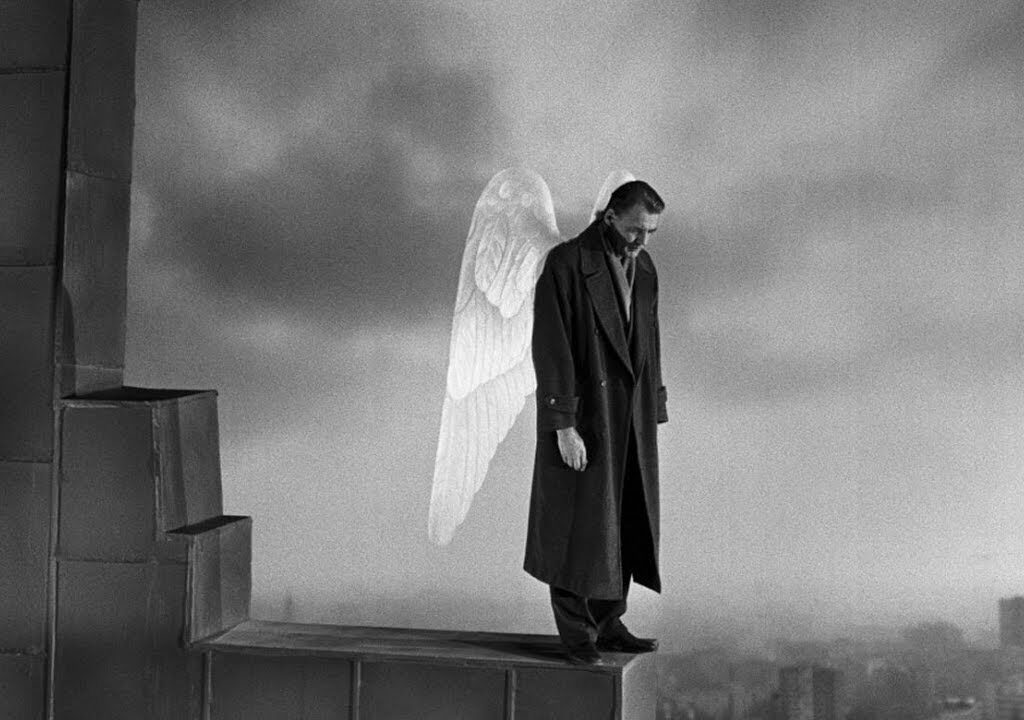
This exploration of imperfect angels reaches its fullest expression with the Gabriel Garcia Marquez short story A Very Old man with Enormous Wings, published in 1968. It’s the story of a frail old angel who appears during a deluge. (After the angel is discovered, the deluge stops. Also a sick child suddenly gets well.) But no one quite notices these coincidences. The couple who find the angel discover he speaks an unintellible foreign language and can barely walk. They put him in their chicken coup, then charge townspeople money for the privilege of seeing their captive angel. So many people are attracted to the town that other vendors set up shop, displaying their own curious attractions. The couple who found the angel prosper, though the angel himself becomes seriously ill. After a tough winter, he recovers, grows back his wings and has just enough strength to fly away.
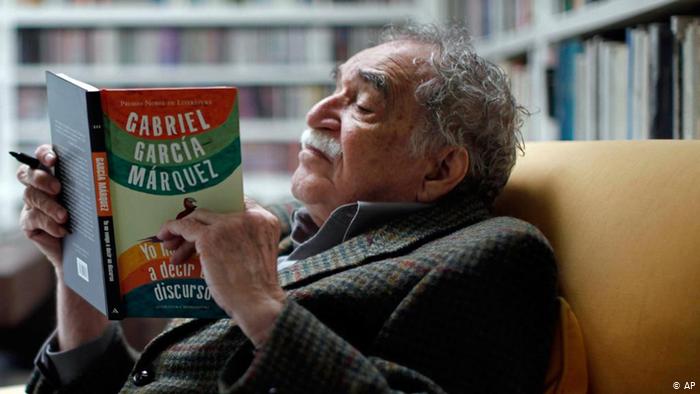
It’s a strange magical story. Marquis commented that he wrote it after he had gained fame as a writer. He found this fame difficult to handle, as shameless fans made impossible demands, taxing him to support their pet causes and to appear at celebrity functions. Marquis identified with the non-ideal angel who becomes a curiosity, attracting people with unusual problems: “The most unfortunate individuals on earth came in search of health. A poor woman who since childhood had been counting her heartbeats and had run out of numbers. A Portuguese man who couldn’t sleep because the noise of the stars disturbed him. A sleepwalker who got up at night to undo all the things he had done while awake.”
Professor Adam Crowley comments: “One of the things this fiction is doing is it’s enjoying the fact that it’s fiction and we can enjoy the fact that it’s fiction. What a fantastical, imaginative world! –and this is the kicker–that very deliberately, very obviously, without any kind of artifice, allows us to imagine beyond the world that we live in everyday with absolute freedom.”
Commenting on the unusual appearance of the angel, so un-angelic, so powerless and uncommunicative, Professor Rebecca Balcarcel suggests: “Maybe the problem is that when God or the divine does erupt into our lives, we don’t know what to make of it and how to treat it and we don’t even recognize it for what it is.” Balcarcel worries that none of the characters in the story treat the angel well or seem interested in understanding who or what it is, but then she says, “So I feel that maybe it’s the reader who ends up growing and changing as we look at this story and we see what not to be.”
The story ends almost as magically as it began, with a woman watching the very old man with enormous wings departing: “Elisenda let out a sigh of relief, for herself and for him, when she saw him pass over the last houses, holding himself up in some way with the risky flapping of a senile vulture. She kept watching him even when she was through cutting the onions and she kept on watching until it was no longer possible for her to see him, because then he was no longer an annoyance in her life but an imaginary dot on the horizon of the sea.”
Full text of the story here.
